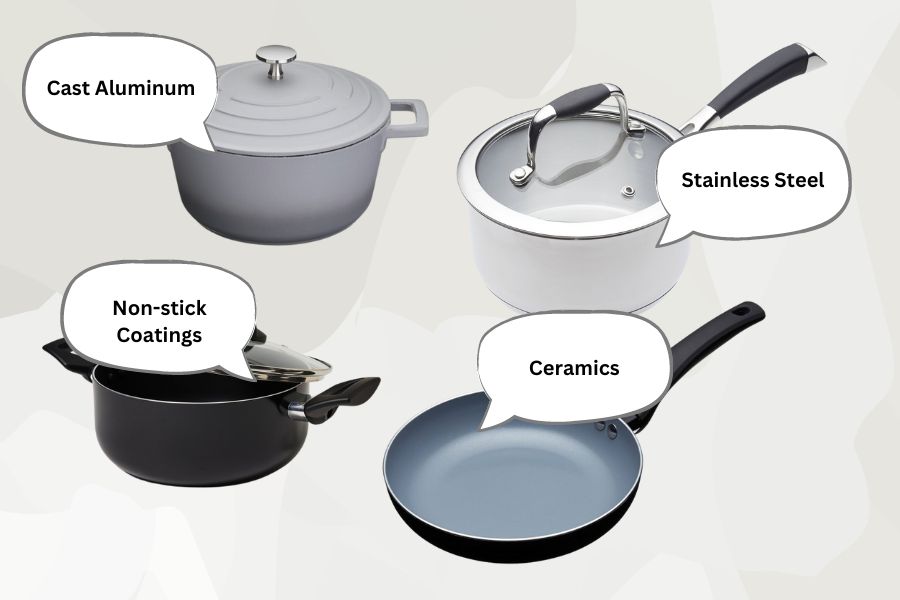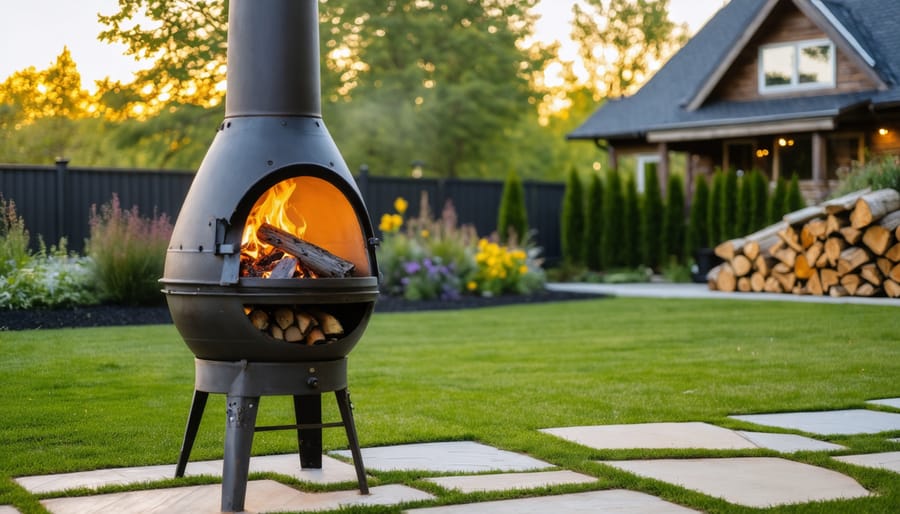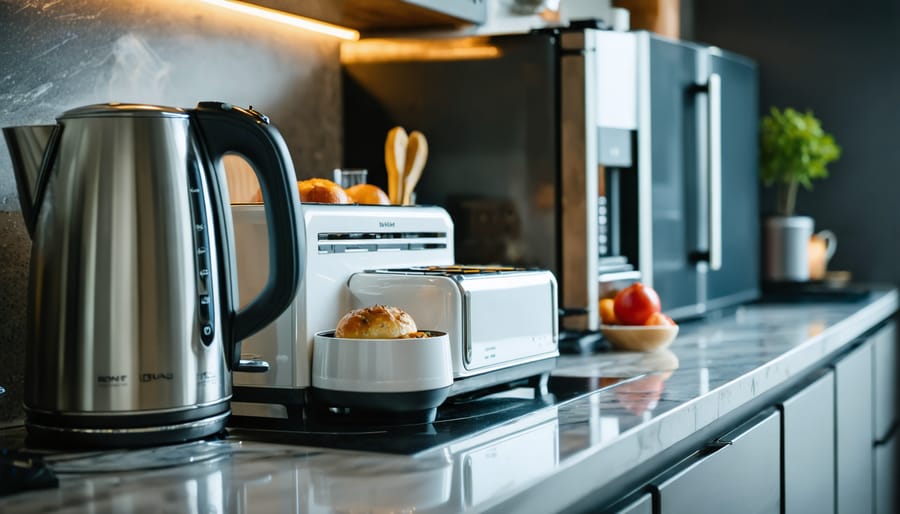Cooking in the oven can be a great way to prepare delicious meals, but ensuring you’re using the right cookware is important. Masterclass cookware is popular among home chefs, but is it oven-safe?
In this article, I’ll discuss:
- What factors affect the oven safety of cookware
- The materials used in Masterclass cookware
- The oven safety ratings for different types of Masterclass cookware
- Signs of damage that indicate that cookware is no longer oven-safe
- How to use Masterclass cookware in the oven safely
With this information, you’ll have everything you need to know to ensure you’re using the right cookware in the oven and get the most out of your Masterclass cookware.
Can Masterclass Cookware Go in The Oven?

Most MasterClass cookware is oven-safe up to 200°C (392°F), so you can easily use it in the oven!
Items like the MasterClass Induction Aluminium Cookware, the MasterClass Cast Aluminium Induction-Safe Non-Stick Frying Pan, the MasterClass Shallow Casserole Dish with Lid, and the MasterClass Dutch Oven are all certified oven-safe.
This means that they can all handle the heat retention of the oven without any problems. However, not all MasterClass cookware can go in the oven. For example, the MasterClass Ceramic Non-Stick Eco Fry Pan is not oven-safe, so checking the product specifications to ensure your cookware is safe is important.
What Factors Affect the Oven Safety of Cookware?
Regarding oven safety, the cookware’s material, the cookware’s construction, and the cookware’s condition all play important roles.
1. The Material of The Cookware.
You’ll be amazed at the quality of the cookware – it’s made from high-grade materials that can withstand oven temperatures so that you can feel confident in your culinary creations.
The material of the cookware is an important factor to consider to ensure that it will be oven-safe. Glass, ceramic, and cast iron are some materials that can typically handle high temperatures in the oven without any damage. On the other hand, aluminum and non-stick coatings may not be oven-safe at all or only up to certain temperatures.
It’s important to check the warranty or guarantee of the cookware to ensure it is oven-safe. Look for heat distribution and temperature resistance ratings as well, as these will indicate how well the cookware will perform in the oven.
2. The Construction of The Cookware.
Constructing cookware from multiple layers of different materials can be challenging, as the varying rates of expansion and contraction of each layer may cause the cookware to become weakened or break. To prevent this, masterclass cookware is designed with heat-resistant handles and multiple layers of materials that can withstand high-temperature cooking.
This construction ensures the cookware is strong enough to handle stovetop-to-oven use without any risk of cracking or warping. The materials are also designed to disperse heat evenly, allowing users to enjoy consistent and delicious results with every use.
3. The Condition of The Cookware.
To ensure delicious results every time, it’s important to check your cookware for any chips or cracks before you use it in the oven. Cookware that is chipped, cracked, or otherwise damaged should not be used in the oven as the damage can allow heat to escape, leading to overheating, warping, or even melting.
To protect your cookware from such damage, take extra precautions when handling pots, pans, and lids. Pay special attention to the handles and lids, as these are the most vulnerable parts of the cookware. Additionally, always follow the manufacturer’s specifications and instructions when using cookware in the oven.
Taking these precautions will help ensure that your cookware is safe to use in the oven and will last for years.
What Are the Materials Used in Masterclass Cookware?

Masterclass cookware is crafted from cast aluminum, stainless steel, non-stick coatings, and ceramic, providing various materials.
Cast aluminum is a cost-effective option that’s durable and retains heat well.
Stainless steel is strong and corrosion-resistant, but it can be more expensive.
Non-stick coatings, usually made from Teflon or ceramic, make cooking without sticking easier.
Ceramics are non-reactive and don’t contain any harmful chemicals. It’s also a good heat conductor.
However, knowing the maximum temperature limits is important to ensure the cookware is safe.
User experiences and independent testing can help you find the perfect combination of materials for your needs.
| Material | Pros | Cons |
| Cast aluminum | Durable, good heat conduction and retention, inexpensive | Can be heavy, not as non-stick as other materials |
| Stainless steel | Strong, corrosion-resistant, good heat conduction | It can be heavy, not as non-stick as other materials |
| Non-stick coating | Easy to cook food without sticking, non-reactive | It can be expensive, not as non-stick as other materials |
| Ceramic | Not as durable as other materials, it can be expensive | Can be scratched or damaged, some non-stick coatings contain harmful chemicals. |
Oven Safety Ratings for Different Types of Masterclass Cookware
Knowing the oven safety ratings for different types of cookware is essential when deciding which is best for your needs.
Cast aluminum cookware is oven-safe up to 200°C (392°F), making it an ideal choice for broiling, searing, and commercial oven use.
Stainless steel cookware is oven-safe up to 200°C (392°F) but may have a non-stick coating that isn’t safe for the oven.
Non-stick cookware is typically not oven-safe, though some sets can withstand temperatures up to 180°C (356°F).
Ceramic cookware is oven-safe up to 500°C (932°F).
However, be sure to use oven mitts or potholders when handling hot cookware, and double-check the product specifications before use.
| Material | Oven Safe Up To | |
| Cast aluminum | 200°C (392°F) | |
| Stainless steel | 200°C (392°F) | |
| Non-stick cookware | Not oven safe | |
| Ceramic cookware | Up to 500°C (932°F) |
Signs of Damage that Indicate that Cookware Is No Longer Oven Safe
Now that you know the oven safety ratings of Masterclass cookware, it’s important to be aware of the signs of damage that indicate the cookware isn’t oven-safe.
Chips or cracks in the cookware, blisters or bubbles in the non-stick coating, loose or missing handles, and warping or deformation are all signs that the cookware should be discarded.
Following the care instructions for your cookware and exercising the best practices in terms of versatility in cooking methods can help to avoid these issues and ensure your cookware stays oven-safe.
How Do I Use Masterclass Cookware in The Oven Safely?
To ensure you use your cookware safely in the oven, it’s important to be aware of the safety ratings and to follow best practices. When it comes to Masterclass cookware, check the product specifications to ensure it’s oven-safe.
Once the oven’s preheated, place the cookware on a baking sheet or other heatproof surface instead of directly on the rack. Wear oven mitts or potholders when handling the cookware, as it’ll be hot.
Also, don’t use chipped, cracked, or otherwise damaged cookware; it can break or warp in the oven. Inspect the cookware regularly for any signs of damage to ensure your safety and the convenience of timesaving benefits. If you see any, discard the cookware and replace it with a new one.
FAQs
Does Masterclass Cookware Distribute Heat Evenly in The Oven?
Yes, Masterclass cookware is designed to distribute heat evenly in the oven. This is because the cookware is made from high-quality materials that are good conductors of heat. The cookware also has a thick bottom, which helps to distribute heat evenly.
Are the Handles of Masterclass Cookware Heat-Resistant for Oven Use?
Yes, the handles of Masterclass cookware are heat-resistant for oven use. The handles are made from heat-resistant materials like stainless steel or silicone. This means that you can safely use the cookware in the oven without the handles becoming too hot to touch.
Does Masterclass Provide a Warranty or Guarantee for The Oven Safety of Their Cookware?
Yes, Masterclass provides a warranty for the oven safety of their cookware. The warranty covers the cookware for up to 1 year from the date of purchase. If the cookware is found to be defective or unsafe for oven use, Masterclass will replace the cookware or refund your purchase price.
Can Masterclass Cookware Withstand Sudden Temperature Changes when Used in The Oven?
Yes, Masterclass cookware can withstand sudden temperature changes when used in the oven. This is because the cookware is made from high-quality materials that are good at withstanding thermal shock. Thermal shock is the sudden temperature change that can cause cookware to crack or shatter.
Conclusion
In conclusion, Masterclass cookware can be used safely in the oven if made of the right materials and given the proper oven safety rating. Be sure to check the label to ensure the cookware is oven-safe and look for signs of damage that may indicate it’s no longer safe to use in the oven.
With the proper precautions, you can enjoy your delicious meals cooked in Masterclass cookware in the oven.
Also, Check:






